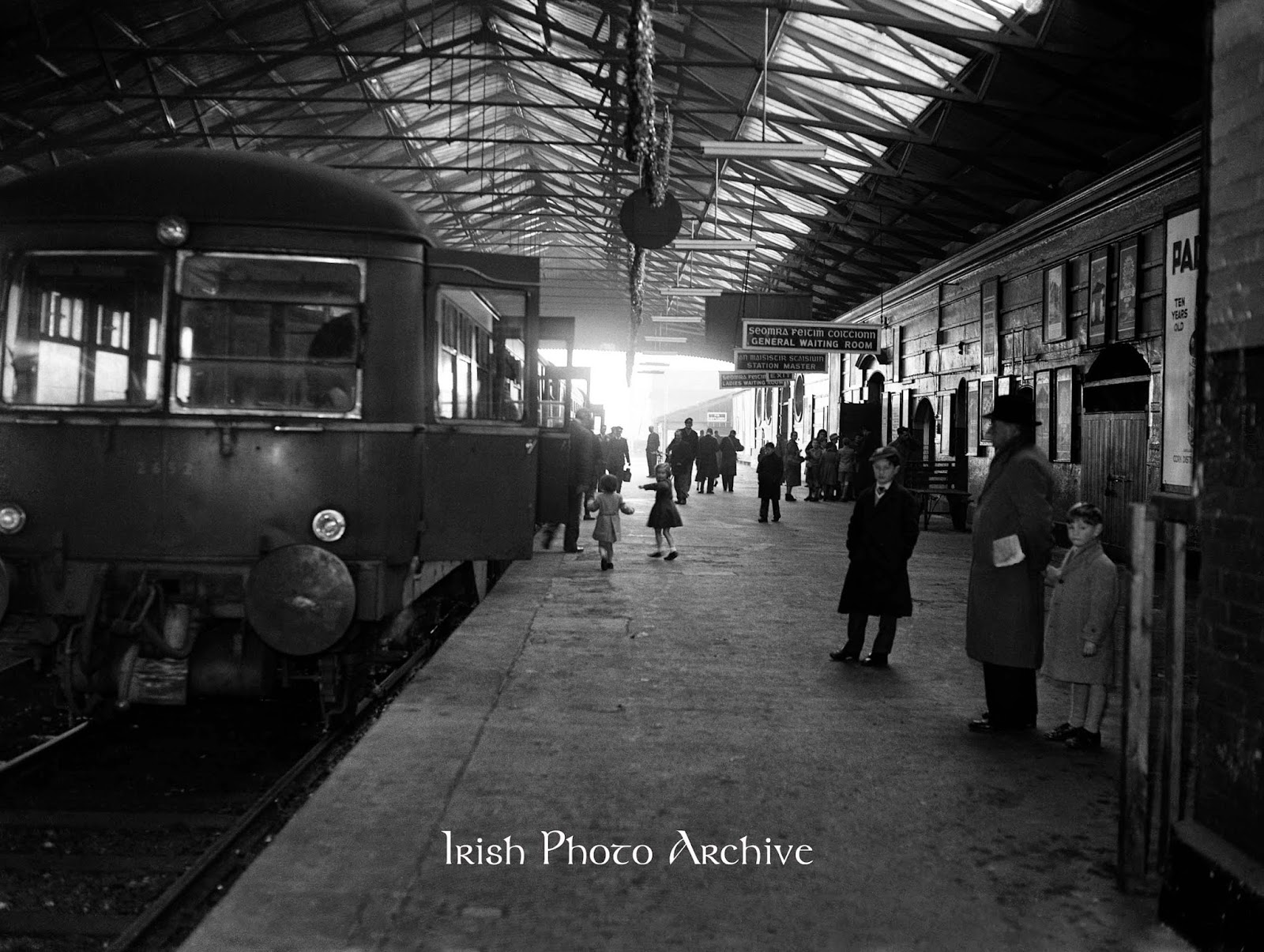The beautiful building at the top of Harcourt Street used to
be a vibrant terminus of a railway line from the seaside town of Bray. It was the
gathering point for Dubliners on summer weekends as families escaped to the
seaside breezes. Young people were also
familiar with the station from travelling to dances in Bray on Friday nights.
The Harcourt line passed through Rathmines/Ranelagh,
Milltown, Dundrum, Stillorgan, Foxrock, Carrickmines, Shankill, Woodbrook, and
terminated in Bray. The line opened in 1854, and there were two major incidents
on the line. The first was when a train failed to stop at the Harcourt station
and crashed through the wall, knocking bricks and debris onto Hatch St.. The second
was when two trains collided in thick fog at Dundrum in December 1957.
 |
| Last train to leave Harcourt Street station 31 December 1958 |
The station was closed in 1958, despite many public
protests. Todd Andrews had been elected chairman of CIÉ (Córas Iompair Éireann)
in 1958, and he immediately implemented a cost-cutting campaign which involved
closing all unprofitable lines. The Harcourt line was the first to be targeted
by Andrews. The last train to exit the station left on 31 December 1958.
 |
| Last journey to Bray from Harcourt Street 31 December 1958 |
The shell of the station still stands, and was the home for
the Pod nightclub complex, comprising of Crawdaddy, Tripod and the Odeon bar.
However, the complex closed recently, with plans for redevelopment of the space
underway. But the building itself has been recognized by the government as
having architectural significance, so the colonnaded façade will be preserved.








